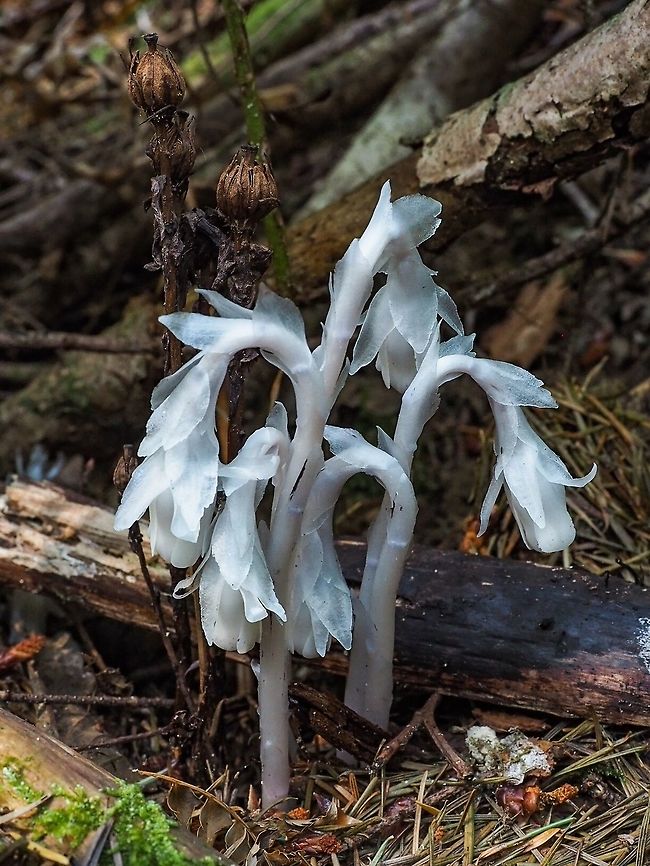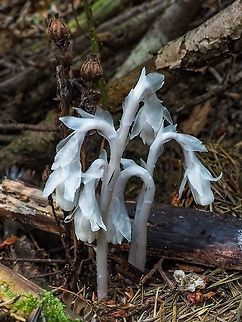 Promoted
Promoted
Ghost Plant, Indian Pipe, (Monotropa uniflora)
Finally, a chance to photograph a beautiful specimen of this very interesting plant. Last year’s stalks are clearly visible behind this year’s. Unfortunately my favourite site where there were numerous plants had been “harvested” with every above ground plant part cut at ground level. Perhaps this article, https://www.americanherbalistsguild.com/sites/default/files/donahue_sean_-_ghost_pipe-_a_little_known_nervine.pdf ,may be the explanation. My only hope is that they return next year.

"Monotropa uniflora", also known as ghost plant, ghost pipe, or Indian pipe, is an herbaceous perennial flowering plant native to temperate regions of Asia, North America, and northern South America, but with large gaps between areas.

comments (7)
"Monotropa uniflora, commonly known as ghost plant, indian pipe, and corpse plant, is an anomaly among plants. These stunning ghosts are flowering, perennial plants that lack chlorophyll. Chlorophyll is a green pigment that is critical for photosynthesis, which is the process where plants produce their own food using sunlight. Since it's not dependent on sunlight , it can grow in dark forests where it spends most of its life underground—only coming above ground to flower and disperse. So, how does this plant obtain nutrients since it doesn't contain chlorophyll? Monotropa uniflora is a myco-heterotroph, which means that it gets its food by parasitizing fungi. Here's how the process works: It starts with a fungus...This fungus wraps its mycelia around the roots of a tree, thus giving the fungus access to the tree's nutrients. In return, the fungus increases the tree's root system, which allows the tree to take in more water and nutrients. Win-win for the fungus and the tree. Monotropa uniflora connects its roots with those of the fungus, thus allowing it to steal nutrients from the fungus AND the tree. It gives nothing back to the fungus or the tree, however, and simply takes what it needs to survive. It is a true oddity in the plant world. {Spotted in Canada by JungleDragon user, Gary Fast} #JungleDragon" Posted 6 years ago